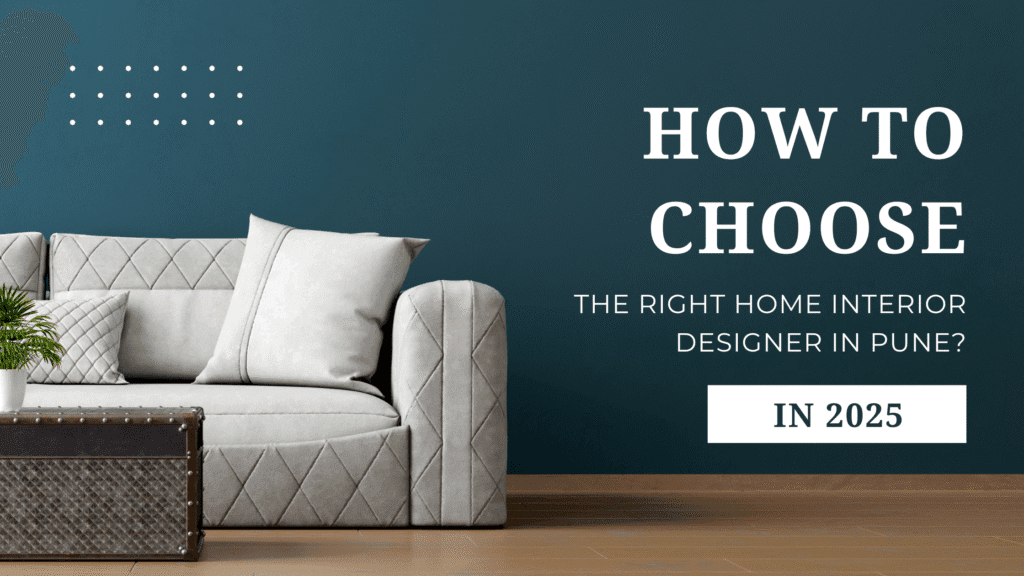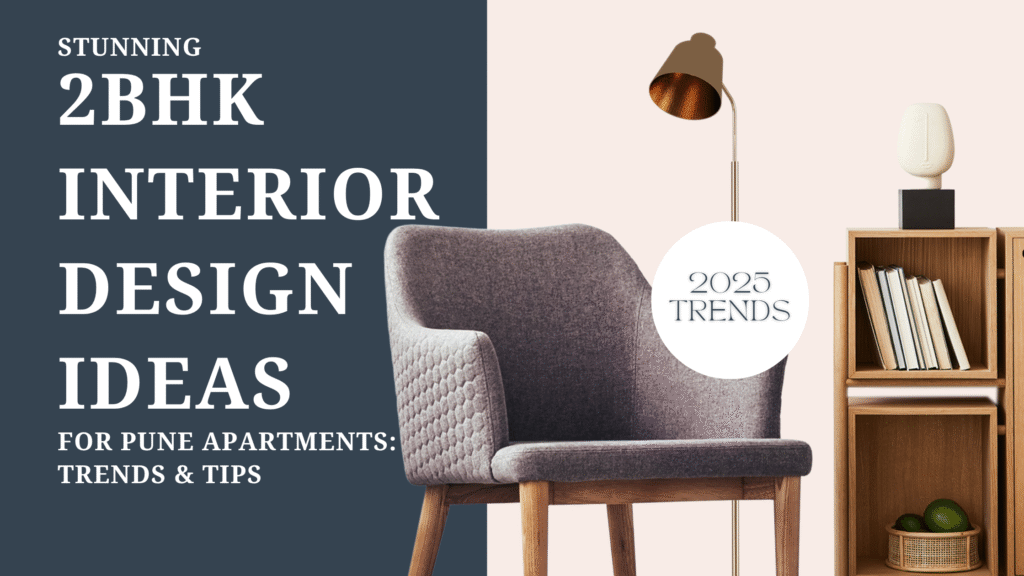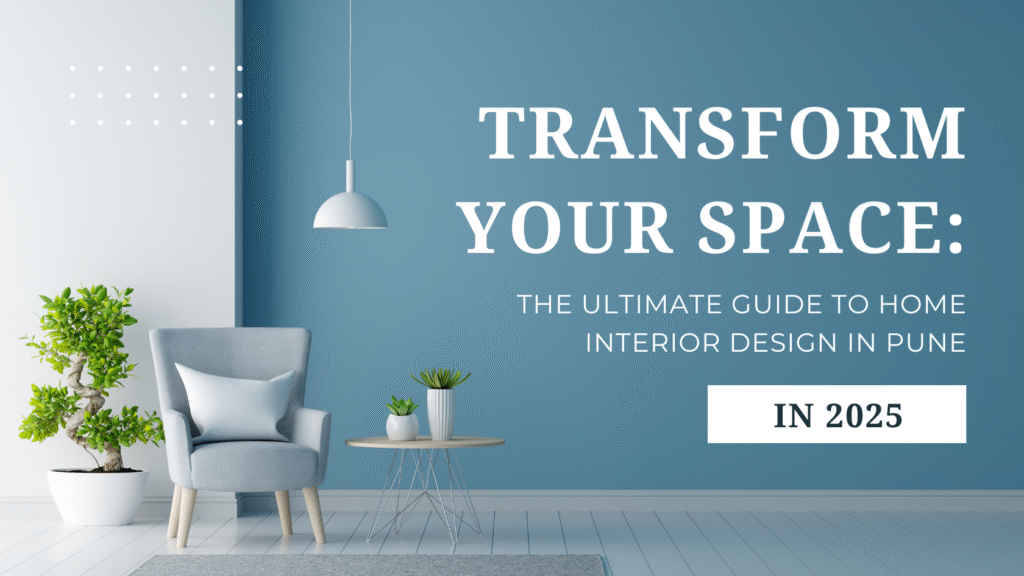Finding Your Perfect Match: A Complete Guide to Selecting the Best Home Interior Designer in Pune
Choosing the right interior designer in pune can make or break your home transformation journey. I’ve watched friends spend months fixing mistakes from the wrong designer choice, while others found their perfect match on the first try. The difference often lies in knowing exactly what to look for and how to evaluate your options.
In Pune’s growing interior design market, you’ll find everyone from fresh graduates to seasoned professionals. The key is matching your specific needs with the right expertise. Let me guide you through a simple way to find a designer. This designer will understand your vision and make it real.
Understanding Your Interior Design Needs and Vision
Defining Your Design Style and Preferences
Before you start browsing designer portfolios, spend time understanding what actually appeals to you. I remember helping my cousin pick a designer. We found out she said she wanted a “modern” design. But she actually loved traditional elements with modern touches.
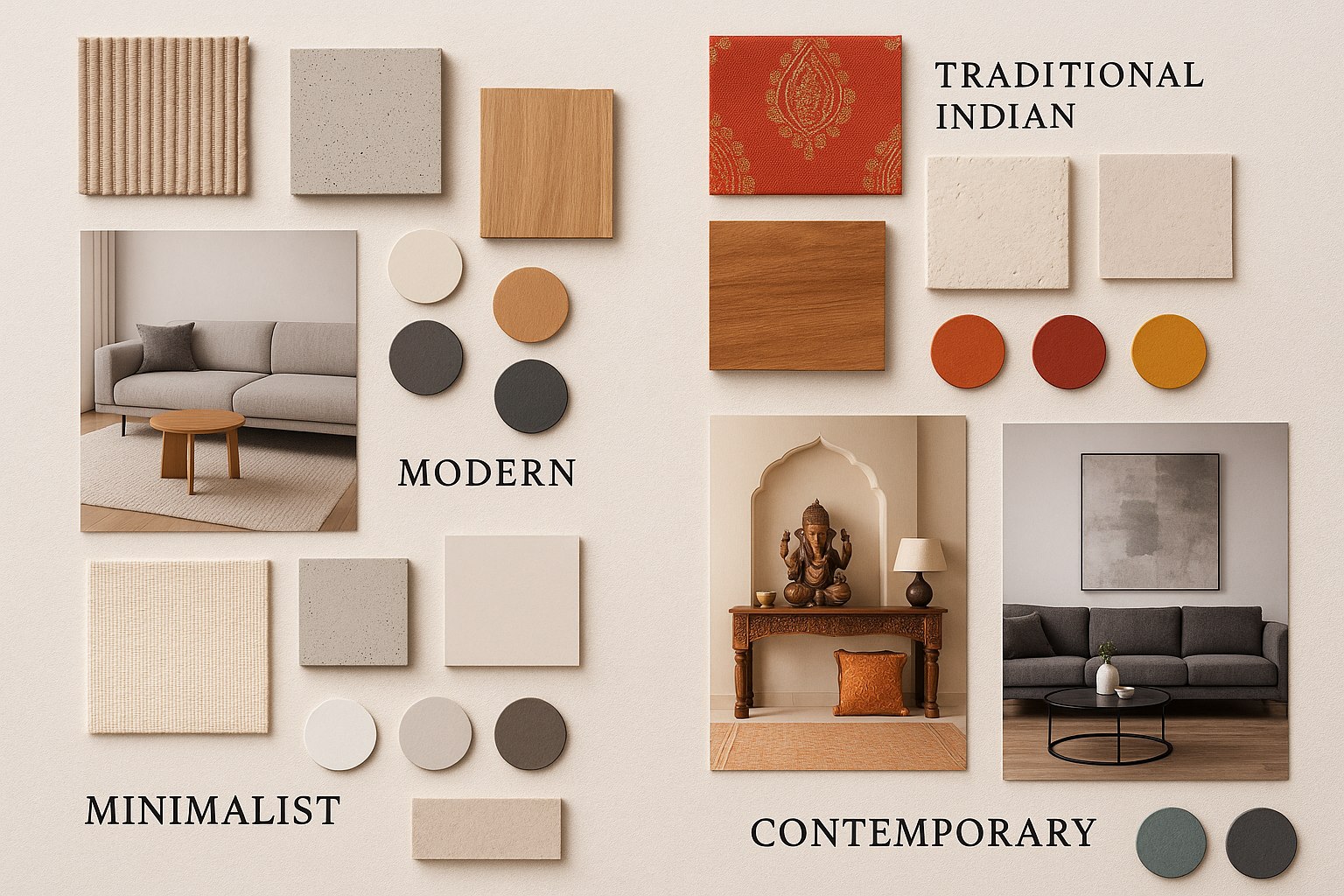
Identifying your aesthetic preferences starts with honest self-reflection. Walk through your current home and notice what makes you feel comfortable. Do you prefer clean lines and minimal furniture, or do you love ornate details and rich textures? Are you drawn to warm wood tones or sleek metal finishes?
Creating a mood board becomes your visual vocabulary for communicating with designers. Save images from Pinterest, Instagram, or design magazines that make you pause and think “I love this.” Don’t worry about being too specific initially – collect everything that catches your eye. You’ll start noticing patterns in your choices.
When searching for good interior designer in Pune, prioritize those who take the time to understand your lifestyle, preferences, and long-term goals.
Determining the atmosphere you want goes beyond just visual style. Think about how you want each room to feel. Should your living room encourage lively conversations or provide a peaceful retreat? Does your bedroom need to energize you in the morning or help you wind down at night? These emotional goals will guide design decisions more than any style label.
Setting Clear Project Scope and Timeline
Many people jump into designer meetings without clearly defining what they actually need. This leads to confusion, budget overruns, and disappointing results.
Deciding on complete renovation versus specific room design affects everything from budget to timeline. If you want to renovate your 2BHK apartment in Pune, you need a good interior designer in pune. Look for someone with experience in big projects. For a single room makeover, you might prefer someone who specializes in focused transformations.
Establishing realistic timelines requires understanding both your own needs and market realities. In Pune, monsoon season can significantly impact renovation schedules, especially for any structural work. Custom furniture typically takes 6-8 weeks, while imported materials can add another month. Factor in festival seasons when work traditionally slows down.
Determining phases of work helps if your budget is tight. You might start with the living room and kitchen, then move to bedrooms later. Talk to your designer about this phased approach early on. Some design elements work better when planned together from the start.
Establishing Your Budget Parameters
Budget conversations feel awkward, but they’re essential for finding the right designer match. Different designers work at different price points, and there’s no point falling in love with someone whose services you can’t afford.
Setting a realistic budget range means research current market rates in Pune. Interior design fees usually range from ₹50,000 to ₹3,00,000 for a full 2BHK apartment. The cost depends on the designer’s experience and the materials you choose. Remember, this is just the design fee – materials and labor are additional.
Understanding different pricing structures helps you compare options fairly. Some designers charge a fixed fee for the whole project. Others charge by the hour. Many take a percentage of the total cost. Each structure has advantages depending on your project type and involvement level.
Allocating funds for unexpected costs is crucial because interior design projects almost always have surprises. I recommend setting aside 15-20% of your budget. This will help cover design changes, material upgrades, or unexpected structural problems that may come up during the work.
Researching Interior Designer in Pune
Finding Qualified Designers Through Various Channels
The search for the right designer requires casting a wide net initially, then narrowing down based on your specific criteria.
Exploring online platforms and designer directories gives you access to the broadest range of options. Websites like Houzz, UrbanClap, and local Pune directories showcase interior design company Pune portfolios with client reviews. Social media platforms, particularly Instagram, offer real-time glimpses into designers’ current work and design philosophy.
Seeking recommendations from friends, family, and local networks often yields the most reliable leads. A person who has worked with a designer can share about their punctuality, budget management, and problem-solving skills. Don’t just ask about the final result – inquire about the entire experience.
Talking to architecture firms and home improvement stores helps you find designers who know about home renovation. Many architecture firms have interior designers on staff or can recommend trusted collaborators. High-end home improvement stores often maintain lists of interior decorators in Pune who regularly work with their products.
Evaluating Designer Credentials and Experience
Credentials don’t guarantee good design, but they indicate professionalism and commitment to the field.
Verifying educational background and professional certifications helps establish baseline competency. Find an interior design company Pune that has experience with homes and businesses, based on your needs. Professional certifications from organizations like the Institute of Indian Interior Designers (IIID) show ongoing education and adherence to industry standards.
Reviewing years of experience and specialization areas reveals whether a designer’s background aligns with your project needs. A person with 10 years of commercial design experience may find it hard to create a cozy home. On the other hand, a specialist in residential design might not know what you need for your home office.
Checking membership in professional interior design associations indicates a designer’s commitment to ethical practices and continuing education. Association members typically have access to better resources and are held to higher professional standards.
Analyzing Portfolio Quality and Style Compatibility
A designer’s portfolio tells the story of their capabilities, creativity, and attention to detail. Before hiring an interior designer in Pune, check if their portfolio has projects like your home. This could be a small apartment or a large villa.
Examining previous work samples and completed projects should go beyond just admiring pretty pictures. Look for consistency in execution quality, attention to detail in finishing, and evidence of problem-solving skills. Pay attention to how they handle lighting, storage solutions, and space optimization.
Assessing versatility across different design styles and budgets shows adaptability. A designer who can only execute one style might not be the best choice if your tastes evolve during the project. Similarly, look for evidence they can work effectively within different budget constraints.
Looking for projects similar to your home type and requirements provides the best preview of what they might achieve in your space. If you live in an old Pune bungalow, find designers who’ve successfully updated similar properties while respecting their character.
Assessing Local Market Knowledge and Pune-Specific Expertise
Local expertise makes a significant difference in execution quality, timeline, and budget management.
Understanding Pune’s Climate and Architectural Considerations
Pune’s unique climate and architectural heritage require specific design considerations that outsiders often miss.
Knowledge of monsoon-friendly materials and ventilation requirements prevents costly mistakes. I saw beautiful hardwood flooring put in by a new designer in Pune. Sadly, it warped during the first monsoon. Experienced local designers know which materials work in Pune’s humidity and how to ensure proper ventilation throughout the year. You can find experienced interior decorators in Pune. They focus on mixing style with function for different budgets.
Experience with local building codes and municipal regulations streamlines the approval process and prevents legal issues. Pune’s building regulations can be complex, especially in older areas or societies with specific restrictions. A designer familiar with these requirements can navigate approvals efficiently.
Understanding of traditional Pune architectural elements and modern adaptations helps create designs that feel authentic to the city’s character. If you want to keep heritage elements or mix traditional and modern styles, local experts can help. They ensure that design choices are respectful and suitable.
Familiarity with Local Suppliers and Vendors
A designer’s vendor network directly impacts your project’s quality, timeline, and cost.
Established relationships with reliable furniture and material suppliers means better prices, priority service, and quality assurance. Designers who regularly work with local suppliers can often negotiate better rates and ensure timely delivery.
Access to local artisans and craftspeople for custom work adds unique value to your project. Pune has skilled artisans who can create custom furniture, metalwork, and decorative elements. Designers with these connections can incorporate truly personalized elements into your design.
Knowledge of best places to source specific materials within Pune saves you time and money. If you need Italian marble, reclaimed wood, or special hardware, local designers can help. They know where to find good materials at fair prices.
Experience with Pune’s Diverse Housing Types
Pune’s housing landscape ranges from heritage bungalows to modern high-rises, each requiring different design approaches.
Familiarity with old Pune bungalows and heritage properties involves understanding structural limitations, preservation requirements, and how to modernize while maintaining character. These properties often have unique challenges like high ceilings, old electrical systems, and heritage restrictions.
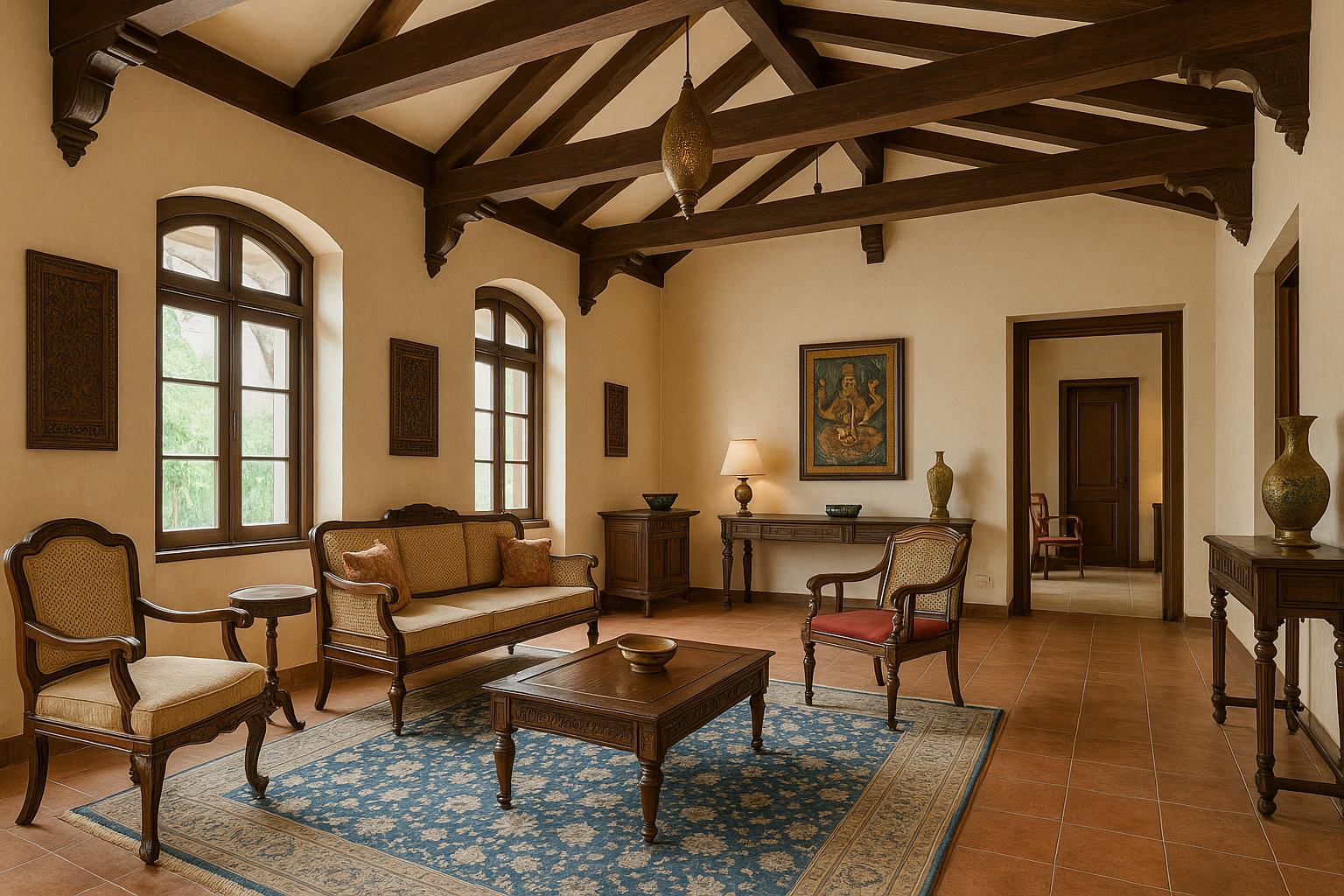
Experience with modern apartment complexes and gated communities means understanding space constraints, society regulations, and contemporary lifestyle requirements. These projects often involve optimizing limited space while meeting modern families’ storage and functionality needs.
Understanding of space constraints in typical Pune residential layouts helps maximize functionality in compact spaces. Pune apartments often have unique layouts that require creative solutions for storage, lighting, and traffic flow.
Evaluating Communication Style and Working Relationship
The best designer technically might not be the best fit for you personally. Communication style and working relationship compatibility are crucial for project success.
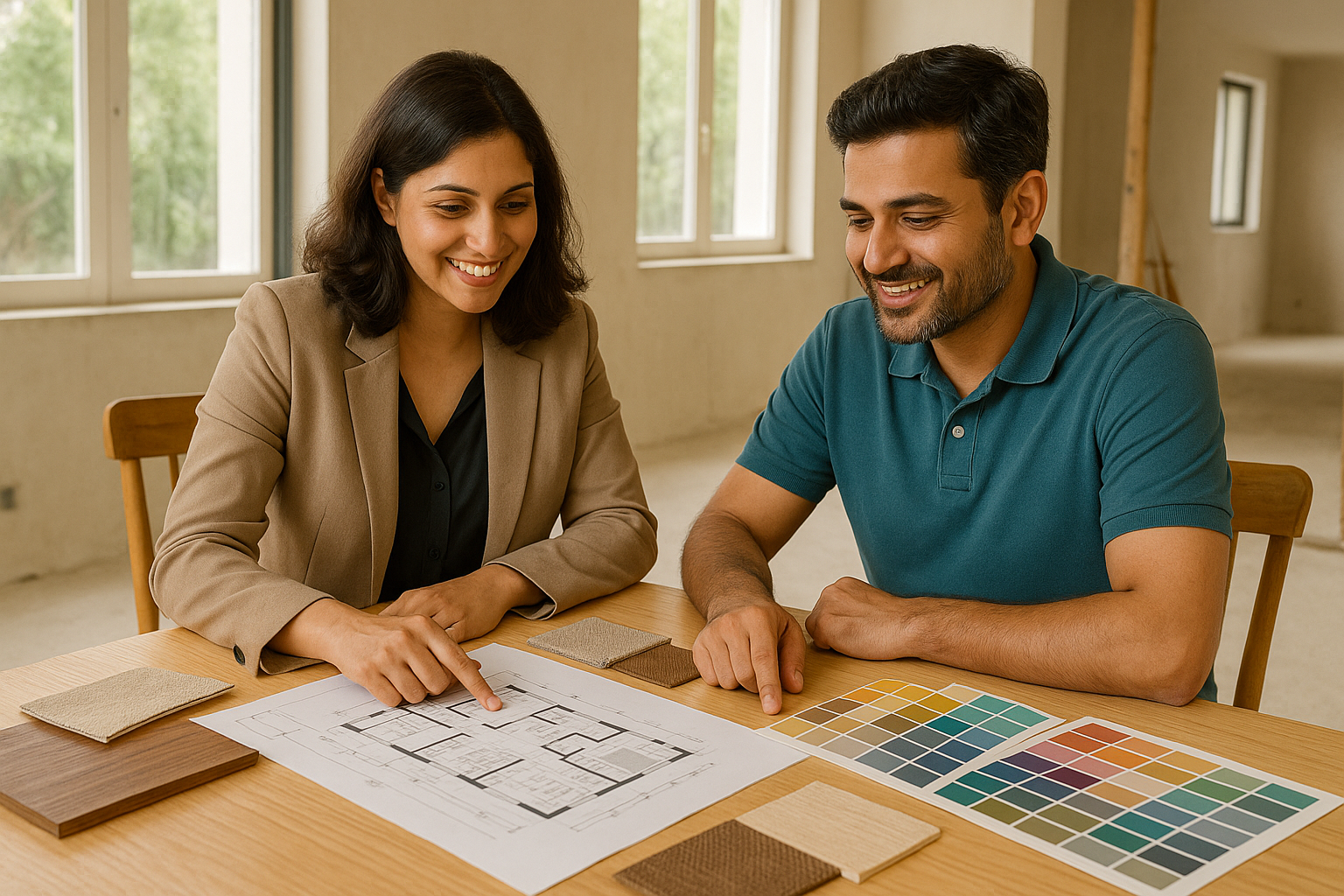
Assessing Communication Skills and Responsiveness
Clear communication prevents misunderstandings, keeps projects on track, and reduces stress throughout the process.
Evaluating how clearly they explain design concepts and processes determines whether you’ll understand and feel comfortable with their recommendations. During initial meetings, notice whether they use jargon or explain ideas in accessible language. Do they ask questions to understand your preferences, or do they seem to push their own agenda?
Testing their responsiveness to calls, emails, and messages gives insight into their professionalism and respect for clients. Slow response times during the initial phase often indicate communication problems throughout the project. However, consider the nature of your inquiry – design revisions might need more time than simple status updates.
Observing their listening skills and ability to understand your vision matters more than their ability to talk. Do they ask follow-up questions about your lifestyle and preferences? Can they paraphrase your ideas back to you accurately? Good designers are skilled listeners who translate your vision into concrete design plans.
Understanding Their Design Process and Client Involvement
Every designer works differently, and you need to find someone whose process aligns with your involvement preferences. Top interior designer in Pune typically offer end-to-end services including design, procurement, vendor management, and installation.
Learning about their step-by-step approach to project execution helps set realistic expectations. Some designers present complete concepts upfront, while others involve clients in each decision. Understanding their typical timeline and milestone structure helps you plan your own schedule and involvement. Many interior companies in Pune offer turnkey services, including space planning, custom furniture, and Vaastu integration.
Determining how much client input they welcome throughout the process ensures compatibility with your participation style. If you want to be involved in every decision, choose a designer who welcomes collaboration. If you prefer to provide initial direction and then step back, find someone comfortable with independent execution.
Understanding their revision policy and flexibility with changes prevents conflicts later. How many revisions are included in their fee? How do they handle changes that affect timeline or budget? What happens if you want to modify something after installation has begun?
Evaluating Project Management Capabilities
Interior design projects involve coordinating multiple vendors, managing timelines, and ensuring quality control. Your designer’s project management skills directly impact your experience. A professional interior designer in Pune will manage timelines, budgets, and vendor coordination to ensure a smooth project experience.
Assessing their ability to coordinate with contractors and vendors determines whether your project will run smoothly. Ask about their typical vendor network and how they handle coordination. Do they have preferred contractors, or do they work with whoever you choose?
Understanding their approach to timeline management and quality control reveals their professionalism and attention to detail. How do they track project progress? What happens if vendors are delayed? How do they ensure work quality meets their standards?
Reviewing their system for handling project updates and progress reports shows their commitment to client communication. Regular updates prevent anxiety and allow for course corrections before problems become major issues.
Making the Final Decision and Moving Forward
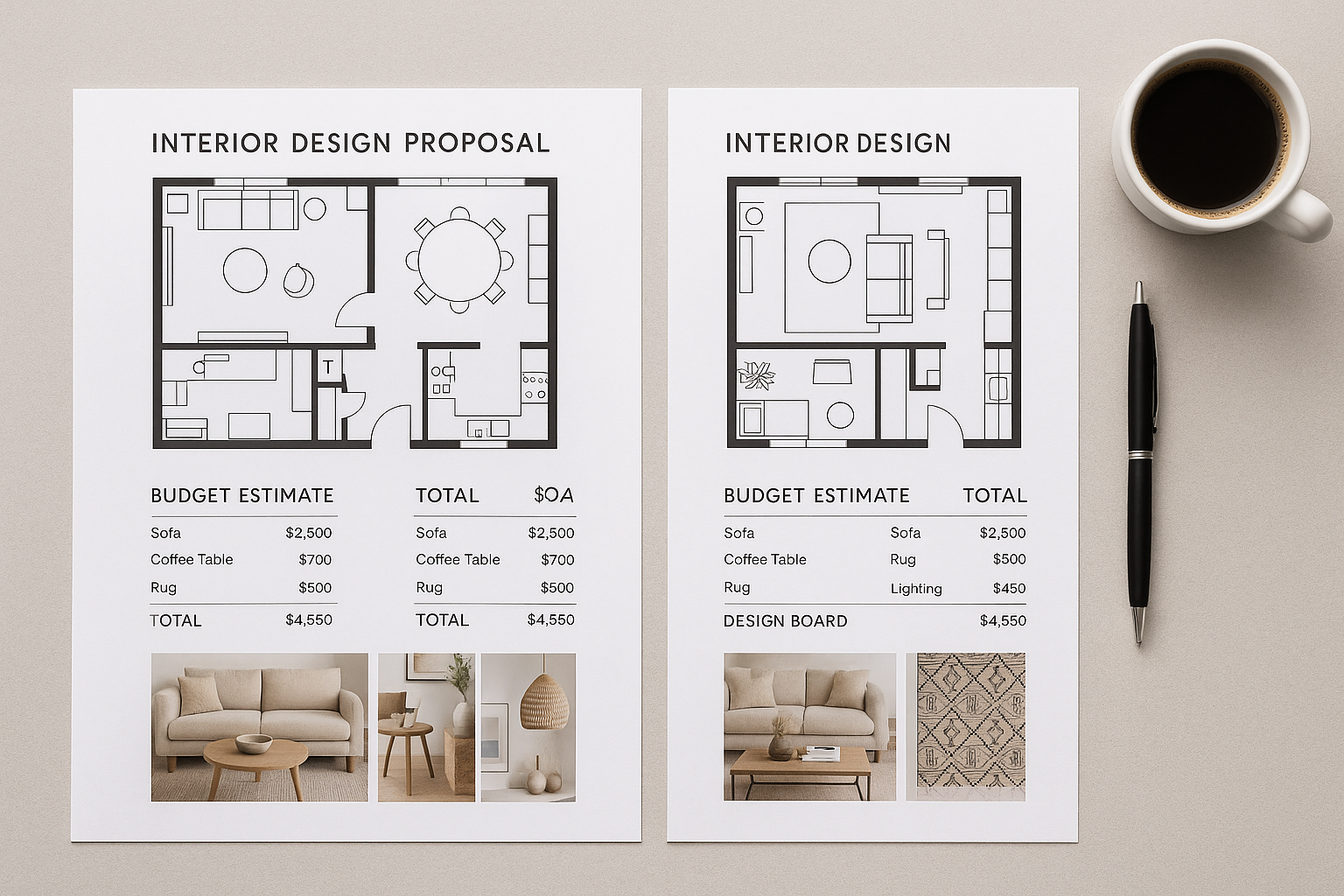
Comparing Proposals and Contract Terms
Once you’ve narrowed your options, carefully compare proposals to make an informed decision.
Reviewing detailed proposals from shortlisted designers requires looking beyond just the total price. Compare what’s included in each proposal – design development, material selection, project management, installation supervision. Sometimes a higher-priced proposal includes services that others charge extra for.
Comparing pricing structures, timelines, and service inclusions helps identify the best value rather than just the lowest price. Think about the total cost of ownership. A designer who charges more at first but offers full project management may save you money and stress. This is better than a designer who charges less but takes up more of your time.
Understanding contract terms, payment schedules, and cancellation policies protects both parties and prevents disputes. Pay attention to intellectual property rights, liability clauses, and what happens if the relationship doesn’t work out. Be wary of designers who demand large upfront payments or have unclear cancellation terms.
Checking References and Past Client Feedback
References provide insights that portfolios and proposals cannot.
Contacting previous clients to discuss their experience offers real-world insights into working with the designer. Ask about communication style, adherence to timelines and budgets, problem-solving ability, and overall satisfaction. Most importantly, ask if they would hire the designer again.
Visiting completed projects if possible to assess quality provides the most accurate picture of a designer’s capabilities. Photos can be misleading. However, seeing the actual work helps you judge the finishing quality. You can also see the attention to detail and how well the design has aged.
Checking online reviews and ratings on multiple platforms gives a broader perspective on the designer’s reputation. Look for patterns in reviews rather than focusing on individual complaints or praise. Pay attention to how the designer responds to negative feedback.
Finalizing the Agreement and Setting Expectations
Clear agreements and expectations prevent most project disputes and ensure smooth collaboration.
Negotiating final terms and clarifying all project details should address any concerns or questions raised during your evaluation process. This is your last opportunity to modify terms before signing. Don’t be afraid to ask for clarifications or small modifications that make you more comfortable.
Establishing clear communication protocols and meeting schedules creates structure for your working relationship. How often will you meet? What’s the preferred communication method for different types of issues? Who should you contact for various questions or concerns?
Setting project milestones and quality checks helps us monitor progress. This way, we can make changes before small problems become big ones. These checkpoints also help manage payments and keep the project on track.
Summary
Choosing the right interior designer in pune requires careful consideration of your personal needs, thorough research of available options, and evaluation of local expertise. Start by clearly defining your vision, budget, and timeline, then research designers who align with your style and requirements. Pay special attention to their knowledge of Pune’s unique climate, architectural styles, and local market. Evaluate their communication skills and working style to ensure compatibility. Some top-rated interior companies in Pune also specialize in eco-friendly design and energy-efficient layouts. Finally, make your decision based on comprehensive proposal comparison, reference checks, and clear contract terms. The right designer will not only transform your space but also make the entire process enjoyable and stress-free.
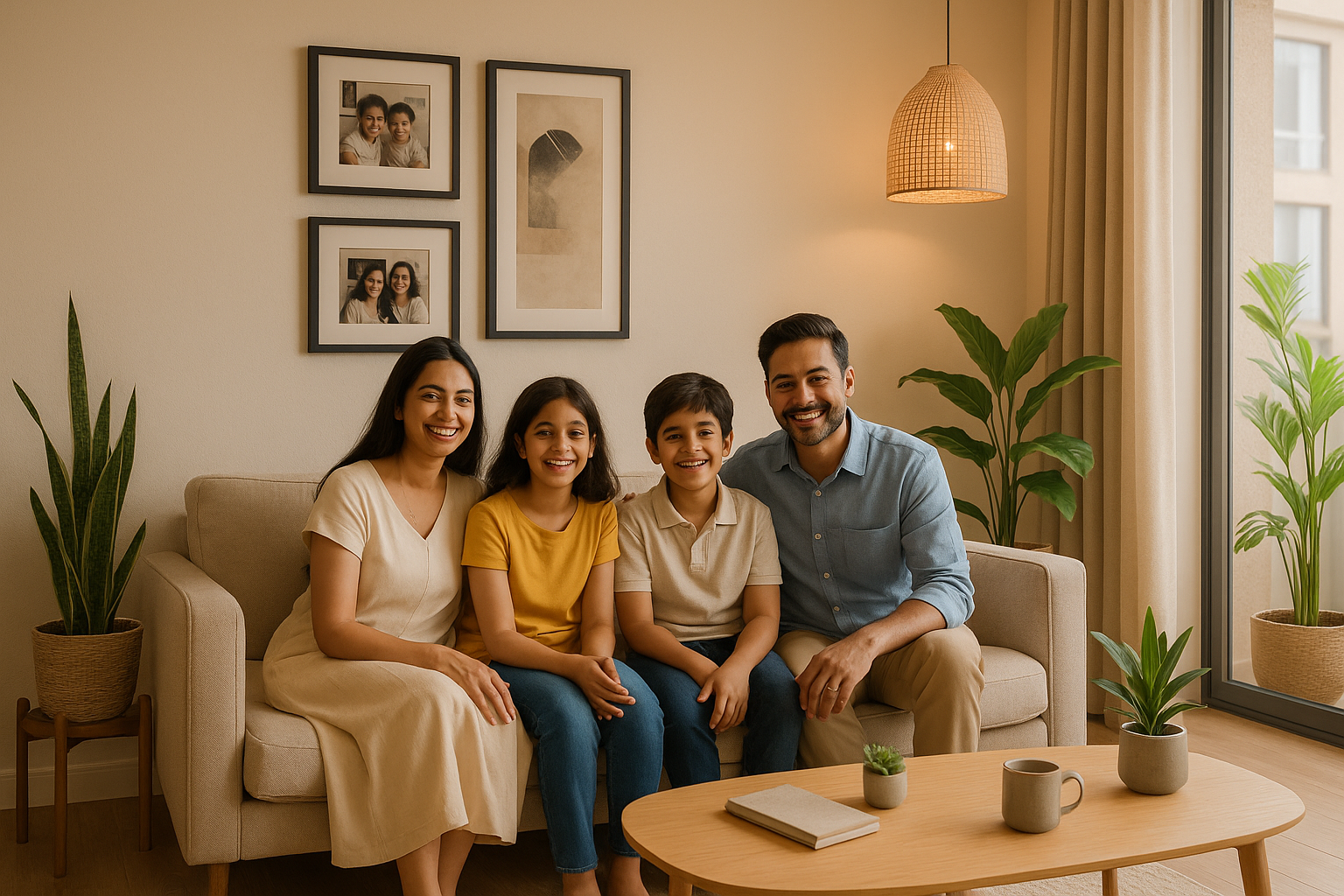
Frequently Asked Questions
Q: How much should I expect to pay for interior design services in Pune?
A: In Pune, interior design fees usually range from ₹50 to ₹200 per square foot. This depends on the designer’s experience, the project’s complexity, and the services offered. Some designers charge hourly rates (₹1,500-5,000 per hour) or a percentage of the total project cost (10-20%).
Q: How long does a typical interior design project take in Pune?
A: Most residential interior design projects in Pune take 2-6 months, depending on the scope of work. Complete home renovations may take 4-8 months, while single-room designs can be completed in 3-6 weeks.
Q: Should I hire a designer who specializes in Pune’s local architecture?
A: Yes, choosing a designer familiar with Pune’s climate, local building regulations, and architectural styles can be beneficial. They understand monsoon considerations, have established vendor relationships, and can work effectively with local contractors.
Q: What documents should I prepare before meeting with potential designers?
A: Get your home’s floor plans, inspiration images, budget, timeline, and a list of specific needs or worries ready. Having these ready will help designers provide more accurate proposals.
Q: How can I verify a designer’s credentials and reliability?
A: Look at their portfolio. Ask for client references. Check their business registration. Read online reviews. Confirm their professional certifications. A reputable designer will readily provide this information.
